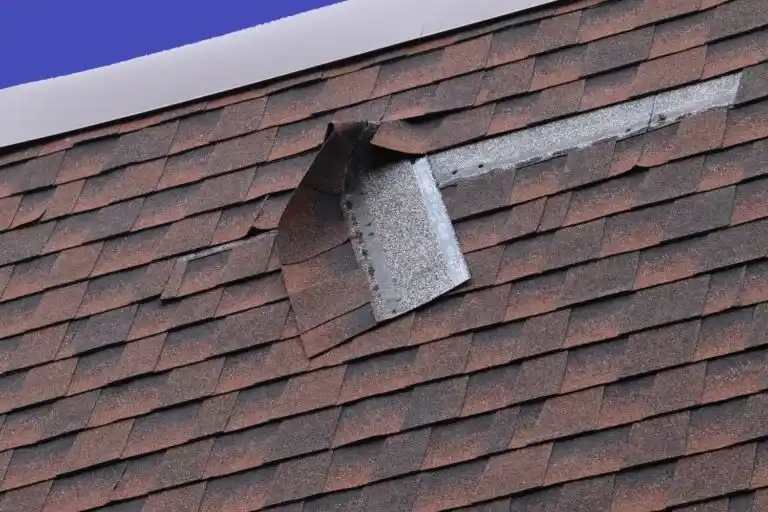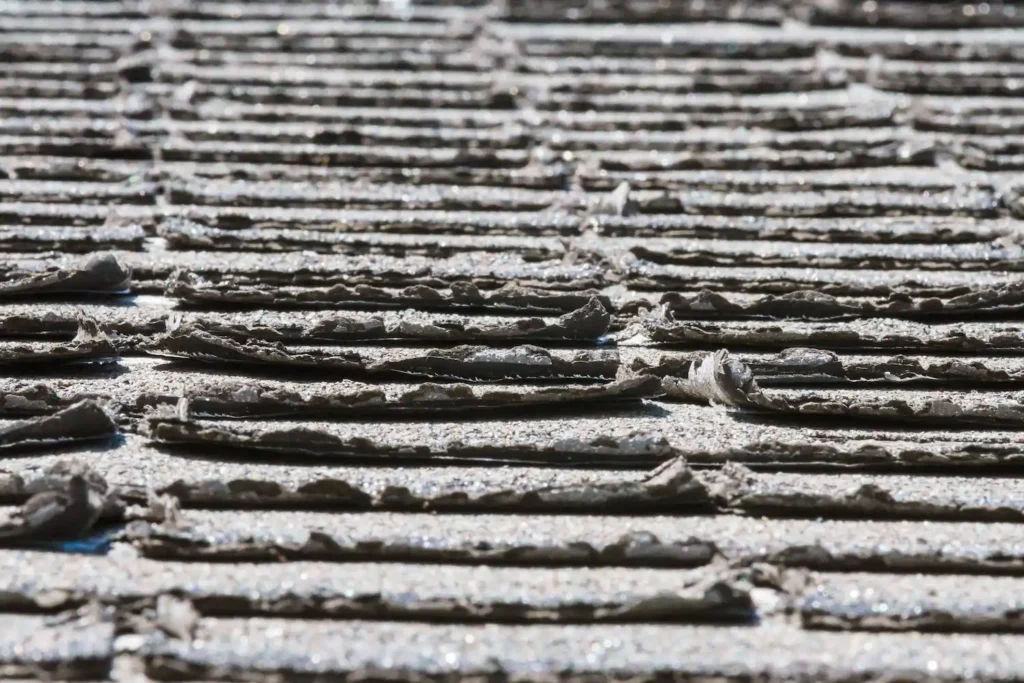I bet if we asked most homeowners what was covered under their homeowner’s insurance policy, they couldn’t think of it off the top of their head. That’s because insurance policies can be complex, and when your roof experiences wind damage, you’re too stressed to think about it. So this guide will help you know what is or isn’t covered before you file your roof claim.
WHAT IS COVERED UNDER A STANDARD HOMEOWNER’S INSURANCE POLICY? ✅
While we wish our insurance policies covered every single thing that damages our roof or home, that’s just not the case. However, your policy should cover the most common and frequent issues that can arise on homes, particularly roofs.
When you sign up for your homeowner’s insurance when you purchase your home, you should do a few things:
- Read it very thoroughly before signing anything.
- Go through it with a lawyer or insurance representative.
- Choose the premiums that suit your budget but will also cover what you need.
- Add on any critical coverages not included, i.e. flood or hurricane insurance.
While some policies may differ, most homeowners can expect a standard policy to cover similar things. Here is a list of the damages most often covered in a standard homeowner’s insurance policy:
FALLEN DEBRIS
This type of roof damage can be caused by trees, branches, and other objects that have fallen on your home due to severe weather conditions. Large branches can be big enough to cause fairly extensive damage to your home, causing roof leaks and water damage.
FIRE & SMOKE
We can thank the Great London Fire of 1666 in Britain for being the reason we have homeowner’s insurance in the first place. It was because of this tragedy that fire insurance came to fruition. And today, homeowners still reap the benefits of having any and all fire or smoke damage covered under their policy.
HAIL
Most homeowners’ policies are going to cover the damage that can come from a hailstorm. Even small hail can be enough to cause dents, cracks, or even punctures in your roof’s shingles. And if and when that happens, you should be covered.
LIGHTNING
Lightning is one of the most common weather-related claims made to insurance companies. This is because it’s so difficult to prevent and can cause major damage in an instant. If you have any damage caused by lightning, it should be covered under your policy.
THEFT AND VANDALISM
While this isn’t necessarily a roofing issue, it’s good to know that theft from your property or vandalism occurring on your property will also be covered under even the most standard policy. You can rest easy knowing that when you and your home are most violated, insurance has you protected.
WATER DAMAGE
A leaky roof or a burst pipe can cause some pretty extensive (and costly) water damage. Luckily this is something you can almost always consider covered. However, certain things like sump pump overflows or backups might not be covered, so it’s important to read the fine print and add on any additional coverages if necessary.
WEIGHT OF ICE OR SNOW
Snow is heavy! And while our roofs are sturdy enough to stand up against the elements, the added weight of snow and ice can be enough to damage the roofing materials and the structural integrity of your roof. If your roof were to collapse under the weight of snow or ice, you might have a good chance of getting your replacement covered.
WINDSTORMS
Wind damage is probably the most common type of roof damage that occurs and is also the most likely to be covered under your policy. This includes any windblown debris, downed trees, or other structural damage caused by high winds.
WHAT ISN’T COVERED UNDER A STANDARD POLICY? 🚫
Unfortunately, there are some things that are considered add-ons to insurance and won’t necessarily be covered under a standard policy. These may be occasional coverages that are dependent on where you live and what sorts of extreme weather your area is prone to— for example, hurricanes, tornadoes, or floods. These types of perils might not be covered under homeowner’s insurance:
EARTHQUAKES
There aren’t many states that actually experience earthquakes— at least not regularly. But California, Alaska, Hawaii, and Nevada top the list of states that experience them the most. These states are perfect examples of when you might want to consider adding earthquake coverage to your policy.
While the state of California requires insurance companies to offer the add-on, homeowners do not have to add it if they don’t want to. But, it’s important to know that if an earthquake does damage your home or roof, you will be paying out of pocket for roof repairs.
FLOODS
Flooding is another one of those instances where you might want to consider an add-on. If you live in a state that’s prone to flooding— such as Georgia, Louisiana, or the Carolinas— you’re going to want to have this coverage. And while it may seem like common sense that water damage would be covered, it varies when it is caused by floods.

North Dakota can be a great example of a case study as they are home to a “100-year flood,” which means a 1% chance of a flood happening, but it can happen. The flood that happened in Minot, North Dakota, in 2011 caused massive damage and flooding to homes all across the area. Since then, residents have been more inclined to add on flood insurance coverage.
HURRICANES
Hurricanes are one of the most common— and costly— natural disasters in the United States. And while they can occur in any state, coastal states are most at risk. Homeowners in hurricane-prone areas should consider getting windstorm insurance or hurricane insurance as an add-on to their policy.
MAINTENANCE ISSUES
Homeowners who fail to maintain their roof are far less likely to get damages covered as their roof was in bad shape in the first place. It’s very important to stay on top of roof maintenance, inspections, and repairs— not waiting until something happens to take a peek at your roof.
If a storm comes through and causes damage to your home that causes a leak, an inspector may come and determine the root cause of the leak. If they notice that your shingles were so old and loose that it was already leaking to begin with, it’s likely that claim will be denied.
WHAT DOES WIND DAMAGE TO ROOF MATERIALS LOOK LIKE?
Wind damage can cause a slew of issues and isn’t always super straightforward to spot. It can actually be invisible, especially to the untrained eye. But, when you’re examining your roof after some wicked winds come through, you should look for the following signs:
1) LIFTED SHINGLES
If you notice that your shingles have lifted up or are no longer lying flat, this is a sign that they’ve been damaged by the wind. Wind can lift up your shingles enough to loosen them and eventually cause them to fall off, which will make your shingles more susceptible to further damage or inevitable water leaks.
2) LOOSE NAILS
Loose nails in your gutters or yard are a sign that your shingles were lifted up from the wind and the nails completely came out. When the storm subsides, the shingles can lay flat again and you wouldn’t know the wiser. So if you spot nails anywhere in the yard, it’s probably worth getting a roof inspection.
3) WATER LEAKS
Water leaks are one of the most common signs that you have wind damage (or any damage) on your roof. If you notice any water stains or pooled water in your attic or ceilings, it’s time to call a roofer. These leaks can cause serious mold and mildew problems if left unchecked.
4) LOOSE OR MISSING SHINGLES
If you notice that any of your shingles are missing or have come loose, this is a pretty clear sign that wind damage has occurred. Shingles can be torn off from high winds and if they’re not replaced, it can leave your roof vulnerable to further damage or leaks.
5) DAMAGED SOFFIT OR FASCIA
Your shingles aren’t the only sign that you’ve sustained roof wind damage. Take a look at your soffits, fascia, and even the gutters. If any of these are damaged, it can deeply affect the entire integrity of your roofing system and cause ventilation, drainage, and insulation issues.
6) GRANULE LOSS
High winds can drag large debris across your roof, hitting it at great speeds. That debris can cause shingle granules to be scraped off, which immediately removes the first top layer of protection for your roof. WIthout granules, your shingles are exposed to UV rays, water, and other elements.
Ultimately, a professional roofing inspection is going to be your best bet in getting the proper coverage and repairs necessary to get your roof back in tip-top shape.
TIPS FOR FILING A WIND DAMAGE INSURANCE CLAIM
When it comes to filing an insurance claim, it goes beyond just knowing what is or isn’t covered on your policy. Homeowners should do a few key things to ensure the process goes smoothly and they get the right coverage.
- Document any damage you see. While you will get an inspection by either your roofer or the insurance adjuster, keeping your own file with notes and photos of damage can be helpful to cover all the bases.
- Don’t hesitate to contact your insurance company. Whether you decide to go through with filing a claim or not, you can get the ball rolling early, so you aren’t left waiting to get everything done while your roof is experiencing a leak.
- Weigh the pros and cons of paying out of pocket vs. a rise in premiums. Some insurance companies may raise your premium if you file a claim— if this is the case, you might want to find out how much out-of-pocket repair costs will be. If they are less than what you’ll pay through insurance, consider that a viable option as well.
- Choose a reputable, professional roofing contractor. A good contractor will help walk you through the insurance process and even speak to your insurance company on your behalf to make sure everyone gets the coverage required to get the job done right.
GET YOUR ROOF REPAIRED BY THE EXPERTS
We know how complicated insurance claims can be, and when you’re already stressing about the wind damage to your roof, we can step in and help take that stress off your plate. We’re happy to answer any questions you may have about filing insurance claims, and we’ll even represent you if your insurance company gives you a tough time.
All we want at MARS Roofing is to make sure you get your roof repaired quickly and efficiently. With that being said, you can easily schedule your FREE roof inspection here so we can get your repairs scheduled ASAP. We look forward to helping alleviate the burden of a wind-damaged roof!





